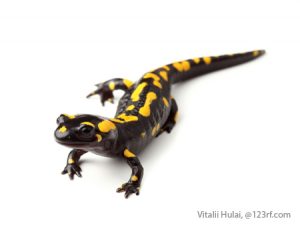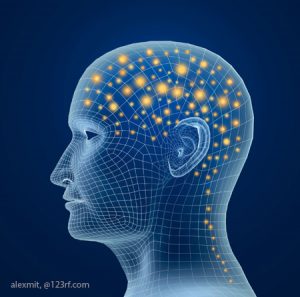

Super Sense of Smell
Could you imagine being able to discover if your friend had recently passed through a place by smelling the floor? Or know who was on the other side of the door without seeing or hearing him? Dogs can do this; why can’t we do it ourselves? Well, dogs have a slight advantage: their noses contain between 20 and 40 times more olfactory receptors than ours. But, could we have a better sense of smell, like Wolverine from the X-Men?
Researchers from the University of Florida have discovered a way that human beings can have a super sense of smell similar to dogs or wolves. By suppressing a gene called Kv1.3, these researchers have managed to improve the sense of smell in rats by between 1,000 and 10,000 times, as well as notably increase their capacity to distinguish between different scents. Humans also have this gene, so, in theory, if we were to block it through medication or, in the future, through genetic therapy, we could enjoy an exceptional sense of smell.
In any case, the power of the human nose is no small feat. With a little bit of practice we can substantially improve our capacity to discriminate between scents. People who want to become perfume experts in France must train for seven years. At the end they can identify 600 basic compounds. It’s simply a matter of repeatedly training the olfactory sense. With a couple of days of practice, for example, we can identify the scents of our family and friends.

(left) Canines’ sense of smell is especially useful for police, as dogs help police to find drugs, bombs, etc. (right) Great white sharks can detect a drop of blood diluted in an Olympic swimming pool.
Chemical vision
Smell is one of the five senses which allows us to obtain information and interact with the environment surrounding us. What the olfactory sense detects are the volatile chemical substances suspended in the air we breathe. This sense is very similar to taste, but instead of entering directly in contact with a solid or liquid, the sense of smell captures the gaseous or suspended chemical compounds in the air.
Super Hearing
When the light is low, sound waves which bounce off objects and the sounds that objects make allow us to “see” in the dark. This is the ability of the blind superhero Daredevil; and it is exactly what bats do to orient themselves at night. Bats emit ultrasonic cries; these bounce off the objects surrounding them and return to their ears, allowing the animals to locate the objects. This is called echolocation.
We humans cannot hear bats’ cries. Our hearing ability is limited to certain frequencies. We also cannot locate the source of a sound with great precision. This has to do with the shape of our ears. But we could solve this. With a little bit of technology and a little bit of surgery we could acquire a bat’s sense of hearing. There are already hearing implants on the market which directly connect to the auditory nerve and which could easily be modified to open our ears to a much broader range of frequencies. Of course, we would then need our brain to untangle all these different sounds in order to get used to processing them and to turn them into useful information. Surely this would be easier in young children, whose brains would adapt to integrate these stimuli in their perception of the world. Regarding echolocation, we could substantially improve our capacity to distinguish where sounds come from if we modified our outer ear, or pinna. Owls, for example, are true experts in discovering the origin of a sound thanks to the shape of the feathers around their ears. Experiments performed with people who have (voluntarily) worn wax prosthetics on their ears in order to modify their shape show that in just a few weeks the brain becomes used to this new form of hearing and manages to use it to “echolocate” the origin of sounds.

(left) It is believed that elephants can predict earthquakes thanks to their capacity to hear infrasonic sounds. (right) Bats “see” in the dark using sound waves.
Predicting earthquakes
On December 24, 2004, there was a huge earthquake in the Indian Ocean, causing massive tsunamis which washed away the coastlines of Indonesia and many other countries. Hundreds of thousands of people died. No one had been able to predict the disaster. No one? Elephants on the African coasts fled long before the destructive waves arrived. How did they do it? It is believed that pachyderms are capable of hearing very low frequency (infrasonic) sounds, noises which are extremely serious. In fact it seems that they use them to communicate over long distances (up to 5 km) on the expansive savanna. These types of waves precede an earthquake, as they are formed when the earth’s crust shakes violently and the waves travel at great speeds. As a result the elephants probably knew that the danger was coming well ahead of time. This hypothesis, however, still must be confirmed through rigorous studies.
Regenerating extremities
Imagine a salamander which loses a leg after a predator bits it off. After 24 hours, a layer of stem cells covers the wound and the limb begins to regenerate: first the toes, then the nerves, the muscles and even the bones. Three months later, the new leg has completely grown back and functions perfectly. People who suffer similar accidents do not have the same luck. How do salamanders do it? Would it be possible to obtain this ability, like Claire from the TV series Heroes?
In some manner, the adult cells of salamanders are capable of returning to stem cell status; cells which are usually found only in the embryo. In this state they are capable of multiplying, becoming any type of cell and organizing themselves to produce a complete organ, with all its tissues. Stem cells are super powerful.

Salamanders are the only vertebrate capable of regenerating an amputated limb as many times as necessary.
Although it may not seem so, we human beings are not that different from salamanders. After an amputation, our cells initially react the same way. Later, a scarring process begins in humans whereas a regenerative process is activated in salamanders. But studies show that our cells could manage to respond the same way as in salamanders if appropriately stimulated. Today it is possible to regenerate the skin and damaged nerves by applying substances which revert the state of adult cells and make them capable of rebuilding some tissues. In order to continue advancing in this field, the key is to study the phenomenon in these amphibians and to try to discover the bases which make this process possible. Experts believe that in 10-20 years we will be able to regenerate amputated human limbs.
Although we’re still a long way from the salamanders, there is a case where we humans can catch a glimpse of the regenerative capacity inside us. An amputated fingertip, if left to heal naturally (simply cleaned and covered with a bandage), will start regenerating all its parts: bone, muscle, skin, nail and nerves. There is a great deal of medical evidence of this phenomenon both in children as well as in adults; a fact which allows us to assume that one day we’ll be able to regenerate complete limbs.
Diving without an oxygen tank
An almost impossible goal. On June 7, 2008, the German Tom Sietas beat the world record for static apnea by holding his breath underwater for 10 minutes and 12 seconds. This may seem incredible to us, but for a Weddell seal this is a piece of cake. In fact these animals can dive for half an hour without any problems while they swim up to 600 meters in depth. Could we manage to do the same? Maybe yes.

When Weddell seals dive deep, their blood circulation is concentrated in the central nervous system (brain and spinal cord), which cannot survive without a continual supply of oxygen. The most fascinating aspect of these animals is that their muscles continue working in spite of the lack of blood and do not suffer damages. This is due to the fact that their muscles contain a molecule which is capable of storing much more oxygen than hemoglobin: a molecule called myoglobin. Thanks to myoglobin, muscles can obtain oxygen when they can’t find it in the blood.
Researchers have discovered that Weddell seals are not born with very high myoglobin levels and are currently trying to discover how adult seals manage to develop this ability. In the future, this could be the key to improving the myoglobin levels in our muscles and turning us into excellent divers.
Programmed to dive
When immersed in water, the human body reacts to adapt to the temporary lack of oxygen and high pressures. This is what is known as the mammalian dive reflex. This reflex allows us to hold our breath much longer than would be possible in normal conditions and to prevent irreparable damages. Some of these adaptations are.

- Bradycardia: reduced heart rate.
- Peripheral vasoconstriction: blood veins in the extremities constrict to send blood to the heart, lungs and brain.
- Splenic contraction: oxygen-containing red blood cells are released.
- Blood shift: blood flows to the lungs to counter the effects of the increased external pressure on the chest cavity (essential at more than 30 meters of depth).
Living without sleep
Whether you’re a student or if you work, surely at some point you’ve come to a realization: there aren’t enough hours in the day to do everything you want to do. What if we could stay active all 24 hours instead of “wasting” eight hours sleeping each night? Some migratory birds need to sleep only briefly for months, and new born dolphins, just like their parents, do not sleep for even a second during the first month of life. Could we manage to decide how many hours we want to sleep without it having any effects on our physical and mental health?
Lethal insomnia
These animals’ ability to stay awake for long periods of time without issues allows us to believe that we could have the intrinsic physiological capability to do so as well. “If we could find a medication which stimulated the same regions of the brain that allow migratory birds to tolerate the lack of sleep, we could live 20-hour lives instead of 16-hour lives as we normally do”, comments Dr. VernerBingman, who studies Swainson’s thrushes, birds which migrate 5,000 km from the Canadian forests all the way down to Peru. These birds go from normally sleeping 10 to 12 hours daily, to only 2.5 hours during migration.
To overcome the lack of sleep, these bird have two adaptations. In first place, they are capable of doing what is called unihemispheric sleep, that is, the two hemispheres of the brain alternate when sleeping. The birds only keep one eye open while they continue flying. The hemisphere which controls the other eye stays asleep. On the other hand, these birds are also capable of micro-naps, 10 to 20 seconds of sleep during flight, which, when added up, allow them to last much longer without any “deep” sleep. Some researchers are now trying to discover how long these micro-naps would have to last in order to be optimal in human beings.

(left) Dolphins do not sleep even for a second during their first month of life. (right) Swainson’s thrushes can alternately “turn off” their brains’ hemispheres or take 10- to 20-second micro-naps while on long migratory flights.
Super vision
No matter how good your vision is, you’ll never have eagle eye vision. These animals are capable of seeing its prey from far away. This is not to mention everything you miss in the dark of night which many animals see because they can capture more tenuous light rays, or other frequencies such as infrared or ultraviolet. This would require some type of surgery, but we could probably modify our eyes to acquire these capabilities.
Dr. Ron Douglas, a scientist from City University of London, believes that it would be relatively easy to give us the ability to see other frequencies of light. Goldfish and butterflies can see in the ultraviolet range, for example. Our retina’s photoreceptors, called rods and cones, contain a protein which allows them to capture light known as opsin. Small differences in the structure of these opsins determine the frequency of light that they can absorb. So the only thing that we have to do is introduce the butterfly’s gene for opsin in our eyes, and we would be able to detect ultraviolet light. It seems easy, but surely other aspects will have to be resolved. On the other hand, the ability of eagles to see their prey in great detail at a long distance is possible thanks to the fact that they have many cone photoreceptors tightly packed into their retinas. Therefore, one manner of increasing our eyes’ resolution would be to increase the number of cones. This, however, would mean being submitted to an unpleasant process of making our eyes bigger.
Rods and cones

Eyes have two types of photoreceptors: rods and cones. Cones are responsible for seeing colors while rods only capture the intensity of light. Cones allow us to see the details, rods capture light changes and movements. As cones only become active with enough light, when we are in the shadows we see things in black and white. Try it out!
Cones are located in the center of the retina, prepared to capture the details of what we look at intently. Rods are usually concentrated on the periphery; they allow us to capture the things which are moving in our surroundings in order to warn us of dangers. Think about it, finding a small insect moving across the floor is better than not looking at anything at all.
The hypothetical superhuman

Wolf’s sense of smell: by suppressing the Kv1.3 gene through genetic engineering, a medication or RNA interference would provide our superhuman with a sense of smell up to 10,000 times greater than normal.
Bat’s keen hearing: an electronic hearing implant which allows her to hear ultrasonic sounds. Modifying the external ear through surgery makes it possible to accurately distinguish the origin of sounds after a brief training period.
Salamander’s regeneration: in the case of amputation, the cells around the wound revert to their stem cell state and are capable of regenerating the limb in a matter of months.
Seal’s apnea: the amount of myoglobin in our superhuman’s muscles has been increased, which allows her muscles to store oxygen for use in case of apnea. She can now last 30 minutes without breathing underwater.
Dolphin’s sleep: the use of pharmaceuticals activates the parts of the brain which allow our superhuman to stay awake for months without the need to sleep or by taking micro-naps. Like dolphins, she can also sleep with an eye open, alternating which brain hemisphere is at rest.
Night vision: genetic engineering has been able to introduce genes for other opsins which can absorb ultraviolet light.
Eagle eye vision: the eyes have been made larger to increase the amount of cones in the retina. This has substantially increased the resolution of her sight, that is, she can see with much greater detail.











Leave a Reply